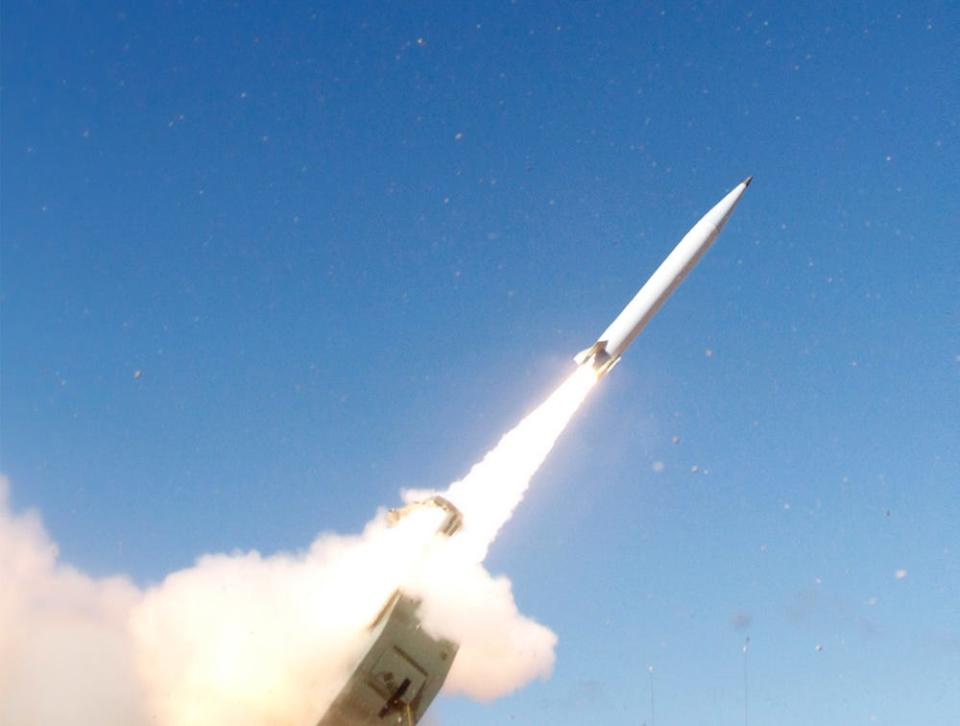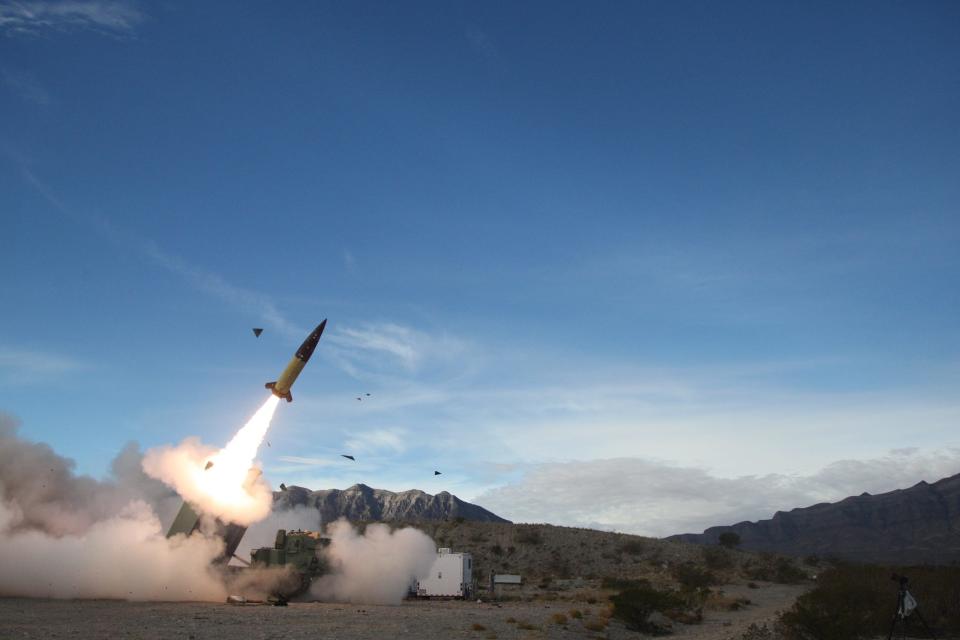US soldiers just put the Army's new Precision Strike Missile to the test against a moving sea target in the Pacific

The US Army tested its Precision Strike Missile against a moving sea target in the Pacific recently.
The next-generation missile will soon replace ATACMS, as well as fill other capability gaps.
This month's test is a significant step in the PrSM program's progress, the Army said.
The US Army tested its new strike missile against a moving sea target in the Pacific earlier this month.
The recent strike marked a "significant milestone" in the development of the new Precision Strike Missile, the Army said. The PrSM, a next-generation long-range precision strike weapon, will eventually replace the older MGM-140 Army Tactical Missile Systems, or ATACMS.
The US Army announced the exercise last Friday, saying soldiers conducted it in Palau on June 16. The exercise involved the US Army's prototype Autonomous Multi-Domain Launcher and two Precision Strike Missiles, which were "able to engage a moving maritime target in conjunction with other Joint assets."
The test occurred during a sinking exercise, or SINKEX, as part of Valiant Shield 2024. The joint force sunk the decommissioned hulk of the ex-USS Cleveland, an Austin-class amphibious transport dock. The Army, however, did not specify the target in its release.
The use of the PrSM in this exercise is the first known use of the missile against a moving sea target, as well as the first employment of the Autonomous Multi-Domain Launcher and the new missiles outside of the US.

The PrSM, developed by Lockheed Martin, has been in the works for years and is intended to provide the Army extended long-range support and deep-strike capabilities. Lockheed says the missile can be used to strike targets between roughly 40 miles away and over 300 miles away, giving it a far greater reach than the older ATACMS.
The Army has said that the new PrSMs will "significantly" extend the "range and lethality" of the US military's long-range precision munitions.
The ballistic missile is capable of performing in all weather conditions, and it is expected to replace both the unitary and cluster variants of the ATACMS. Additionally, because the PrSM is smaller, a launch pod can carry two missiles instead of one.
Future variants of the PrSM "will concentrate on increasing the range and engagement of time-sensitive, moving, hardened, and fleeting targets," according to a Pentagon test and evaluation office document on the program.

Previous tests of the PrSM program have been promising. Back in November 2023, the Army successfully fired a baseline variant of the missile, called Increment 1, from a M142 High Mobility Artillery Rocket System (HIMARS) in a successful demonstration of target engagement.
Following that demonstration test, the Army received its initial delivery of the missiles in December 2023.
Assistant Secretary of the Army for Acquisition, Logistics and Technology Doug Bush said in a statement at the time that "the rapid development and delivery of this capability is a prime example of the Army's aggressive use of new acquisition authorities from Congress that allow us to move at much greater speed to get improved equipment to soldiers."
Then, in January 2024, the Army said it flight tested the seeker that'll allow the PrSM to strike warships and moving targets.
In an early January reflection statement outlining its 2023 accomplishments, the Army said that it "successfully" flight tested Land-Based Anti-Ship Missile (LBASM) multi-mode seeker technology that can be integrated into the PrSM." The Increment II PrSM is intended to provide anti-ship options.
Given recent events involving the Houthis and concerns about great power competition in the Indo-Pacific region, anti-ship capabilities have become especially important. China in particular has built up a variety of anti-ship ballistic and cruise missiles. And the US is increasingly realized it needs to develop its own arsenal of anti-ship capabilities.
Read the original article on Business Insider

 Yahoo News
Yahoo News 
